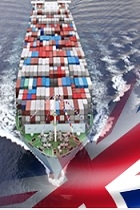The Human Element in Shipping: Working with Others

What happens when a pilot with 26 years of experience, 10 Chinese crew and a newly delivered 900 TEU vessel meet the San Francisco Bay Bridge? Right - a case study about how humans cooperatewith each other, the closure of 27 public beaches and a US$100 million disaster.
The investigation revealed that the Cosco Busan struck the supporting delta tower of the bridge in November 2007, because a cocktail of 10 prescription drugs had affected the pilot's judgement. The US Coastguard was informed about the drugs, but could not deal with the Pilot's condition. Two other official causes were found: No communication between the Master and the Pilot, and no monitoring of the Pilot's actions.
How do we work with others?
As soon as people start working in the shipping industry, they are working with other people - people of different races, cultures and backgrounds. The setup differs too - the new recruit may need to deal with a team (the crew) or an individual (the pilot).
The tasks of assessing individuals, confronting a difficult issue or negotiating usually present a requirement to cooperate with others. In each of these tasks, we use social skills, but the obstacles and difficulties are diverse.

How to assess people
When there is a need to assess a person, for example a pilot, we require the type of judgement we would use in situations such as an interview or reviewing performance of a task. One of the main problems is in judging the individual fairly, and without bias based on false assumptions. However, our brain tends to take short cuts, frequently serving us with incorrect information. Some of the most common forms of natural bias are:
Halo/Horns effect: Believing that a performance level in one field will result in a similar performance level in another field.
Matthew effect: People tend to be judged in the same way as they have always been judged.
Central tendency bias: Since extreme scores require extra evidence, it is easier to give average ratings.
It is safe to assume that the US Coastguard did not deal properly with the medical condition of the Pilot; they and the crew might have been misled by his extensive experience or former performance.
How to confront a difficult issue
In business life, we are not spared from addressing difficult subjects. Examples include talking with someone about their bad performance or delivering bad news. Despite the wide variety of subjects, there are three basic similarities underlying all such conversations:
* When judged in a negative way, people feel their self-image is endangered and try to defend this over-simplified picture.
* Addressing emotions directly stops them from taking control.
* The key objective is to understand how the current situation was created, not to seek admittance for wrongdoing.

Addressing problems in a non-aggressive way is more productive:
Use smart language: Blaming a person directly, e.g. saying things like “You rammed the bridge!“ will trigger self-defense. Instead use “The bridge was rammed!”
Address your emotions: Let them know what you saw and how it makes you feel; then ask for their reasons and demand change: “I see… it makes me feel… what was the reason for…?”
The Pilot, the Chinese and the US Coastguard
This catastrophe was a good example of bad teamwork. The Chinese crew was completely new to the vessel and to each other. They had only spent two weeks together on the journey to San Francisco.
The investigation revealed that the ship manager did not allow enough training time for the crew to cope with the vessel and with each other, resulting in a fine of
US$ 10,000,000. It was proven that the poor communication was at least partly responsible for the disaster.
In particular:
* The absence of mutual monitoring: Good team members habitually check each others' performance, providing feedback and help when appropriate.
* The absence of back-up behavior: The ability of team members to recognize problems when they become visible (fatigue, high workload etc.) and, if necessary, take over tasks.
* Adaptability: Ability of teams to identify external changes, understand their implications and develop new plans accordingly.
The poor communication with the Pilot and lack of monitoring with respect to his actions resulted from the lack of ability to talk about difficult issues combined with poor teamwork. As the crew members had not yet formed a team, they lacked both confidence and the ability to adapt to the situation.
This article is based on “The Human Element – A Guide to Human Behavior in the Shipping Industry” developed by Dirk Gregory and Paul Shanahan of the UK Maritime and Coastguard Agency.

Post your comment
You cannot post comments until you have logged in.
Login to post a commentComments
No one has commented on this page yet.
RSS feed for comments on this page | RSS feed for all comments